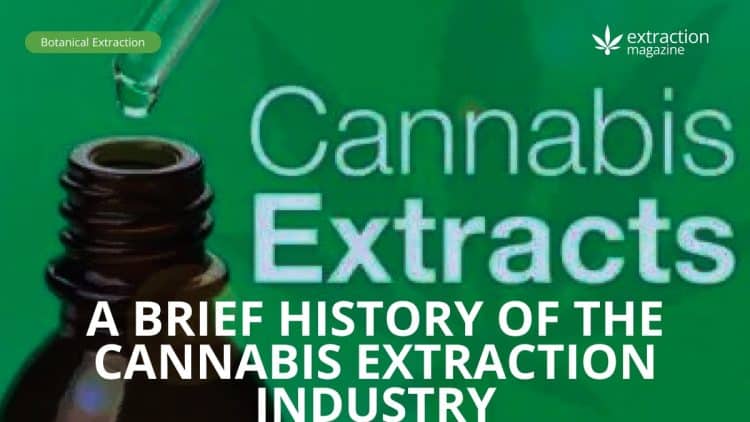The cannabis extraction market continues to grow rapidly in the US. It is currently estimated to be worth $9.24 billion and is expected to reach over $42.89 billion by 2030. This should come as no surprise given the rapidly expanding consumption of cannabis, particularly for medicinal purposes.
Minnesota became the latest state in the US to legalize cannabis for recreational use, allowing residents over 21 years of age in The North Star State to legally possess and consume cannabis. That now makes 23 states – as well as Washington, DC, and Guam – that have legalized recreational cannabis, and 39 states where both recreational and medical use of the plant are legal.
As the national climate changes and more states legalize cannabis, there is no doubt that the heat will be turned up on regulations governing the industry. It is more important to get your act together now and have analytical testing procedures in place to accurately document compounds, potency, and purity, whether you do it yourself or with external professional services.
What is Cannabis Extraction?
Cannabis extraction involves the removal of active ingredients from the plant matter. More specifically, through various technical procedures it is possible to extract cannabinoids and other plant constituents to create a more concentrated product or to separate cannabis constituents from each other.
During the extraction process, the essential oil from the plant’s trichomes is collected, and the major components of the plant – such as tetrahydrocannabinol (THC) and cannabidiol (CBD) – are collected. As such, these concentrates or extracts are stronger than the plant itself, with higher cannabinoid content.
The Evolution of the Cannabis Extraction Industry
The true history of cannabis concentrates began thousands of years ago with hashish, an extracted and concentrated form of cannabis trichomes. [2] Ancient cultures in various parts of the world used hashish for medicinal and religious purposes.
Modern extraction began in the late 1800’s when vegetable oil was used as a solvent to extract compounds to make edible hash. Early medicinal cannabis extracts became a common treatment for ailments such as pain, nausea, and seizures. They were also sometimes used as anesthesia to numb the pain and discomfort from dental procedures.
Cannabis concentrate medicines became highly sought-after throughout the US and Europe, though it wasn’t until the 1940’s when they soared in popularity. As more was learned about cannabis concentrates, publications increasingly began detailing its existence and extraction methods.
Cannabis manufacturers began experimenting with extraction methods as the laws surrounding cannabis increasingly became lax.
Manufacturers also dabbled with various types of solvents, including:
In the late 1990’s, closed-loop extraction was introduced. This process involves extracting a substance using a solvent in a closed-loop system, as the name suggests. [3] In this way, the solvent is recycled and it can be used for multiple extraction runs.
Popular Cannabis Extraction Methods
Ethanol extraction
One of the more common solvent-based extraction methods is alcohol or ethanol extraction. In fact, it’s one of the original methods and is still used today. With this method, a food-grade solvent is used to separate the cannabinoids and terpenes from the plant at very large volumes.
The plant is immersed along with the solvent to extract the cannabis constituents including cannabinoids, terpenes and flavonoids among others. The ethanol is then removed through evaporation, leaving little to no traces of residues in the final product.
Dry ice
Dry ice extraction is another popular solventless technique. With this process, the cannabis plant is submerged in an ice and water mixture in mesh bags. Through a process of agitation, the cold water breaks down the trichomes, which are then gathered and preserved once they drop to the bottom of the bag.
Supercritical CO2
In this extraction method, CO2 is used as solvent to extract the cannabinoids in the plant, including THC and CBD. It is considered one of the most sophisticated and non-toxic solvent extraction methods today. This method is highly tunable to selectively extract the compounds of interest, leaving no trace of harmful chemicals in the final product.
References:
- Lazarjani, M.P., et al, “Processing and extraction methods of medicinal cannabis: a narrative review“, Journal of Cannabis Research, 2021, Vol. 3. Times Cited: 49, Journal Impact Factor: 3.7
- Sharma, P., Murthy, P., & Bharath, M.M.S., “Chemistry, Metabolism, and Toxicology of Cannabis: Clinical Implications“, Iran J Psychiatry, Fall 2012; 7(4): 149–156. Times Cited: 46, Journal Impact Factor: 0.267.
- AL Ubeed, H.M.S., et al, “A Comprehensive Review on the Techniques for Extraction of Bioactive Compounds from Medicinal Cannabis“, Molecules, Feb. 2022; 27(3): 604. Times Cited: 44, Journal Impact Factor: 4.927.
Updated July 2023











